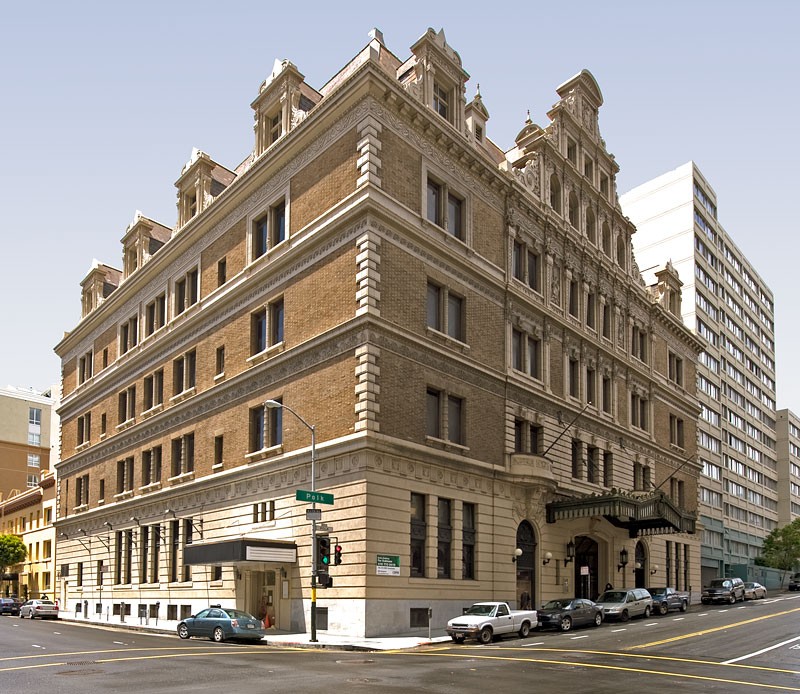California Hall/New Year's Ball Raid (1964)
Introduction
Text-to-speech Audio
Images

Backstory and Context
Text-to-speech Audio
The 1950s and early 60s saw a serious of legal battles over gay bars and nightclubs that led to increased visibility for the LGBT community in San Francisco. At the same time, homophile organizations, such as the Mattachine society also grew, often promoting a more moderate approach to the issues facing the LGBT population that can roughly be summarized as an “assimilationist” ideology. For a time, this ran counter in many ways to the goals and actions of the more activist and radical bar culture (which in the 1950s took a serious hit, as previous entries on The Black Cat and the raid at Tommy’s Place attempt to highlight).
However, by the late 50s and early 60s, the interests of San Francisco’ homophile organizations and bar-based gay queer communities began to converge. New homophile organizations, such as the CRH began to grow in membership, and began to cooperate more with each other and become more involved in the protection of gay “public territory” in bars and nightclubs. Six such organizations came together to organize a costume ball on New Year’s 1965.
Several ministers and lawyers involved with the CRH met with police prior to the event, under the impression that the police would not interfere. Yet, the police blocked off much of the area and attempted to photograph everyone entering the event, discouraging many from attending. When police attempted to enter the event, CRH-affiliated lawyers asked for a search warrant and were arrested for obstruction, along with the ticket taker. News coverage and public opinion seemed to turn decisively against the police. Several ministers with the CRH held a press conference denouncing the police’s conduct, which increased public support. It was, according to Larry Littlejohn, an activist “probably the most dramatic, large scale exhibition of the police trying to show that they were going to force their morality on the city, and they looked so foolish doing it that the editorial comment in the papers was all very negative and most people . . . realized that Gay people were in fact being oppressed by the police department” (Boyd, 234). In the subsequent trail, the judge went so far as to ask the jury to return a verdict of not guilty, so weak as the state’s case was that police were merely there to “inspect the premises.” Marshall Krause, a well-known ACLU attorney, agreed to defend the four arrested. Following the event, the CRH became more involved in police harassment of the LGBT community.
Though the New Year’s Ball raid was not regularly commemorated and did not garner national coverage as the Stonewall riots did, the event proved pivotal in uniting, energizing, and mobilizing the queer community in San Francisco. Indeed, some have referred to it as “San Francisco’s Stonewall” (Armstrong and Crage 732). It spurred on the creation of a united political movement for LGBT rights in San Francisco that was recognized and in contact with the city government as never before, and the emergence of The Castro as a gay neighborhood and site of a more open and celebrated LGBT culture, going into the 1970s.
Sources
Armstrong, Elizabeth A. and Crage, Suzanna M. “Movements and Memory: The Making of the Stonewall Myth” American Sociological Review, Vol. 71, No. 5 (Oct., 2006), pp. 724-751 American Sociological Association.
Boyd, Nan Alamilla. Wide-Open Town: A History of Queer San Francisco to 1965. University of California Press, 2003.
San Francisco Planning Department Historic Context Statement for Lesbian, Gay, Bisexual, Transgender, and Queer History in San Francisco https://commissions.sfplanning.org/hpcpackets/2014.0266U.pdf
https://noehill.com/sf/landmarks/sf174.asp
